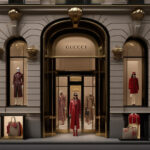In a significant update, Hugo Boss has announced that it will fall short of its 2025 revenue and profit targets due to a lacklustre demand in the marketplace. This revelation, coming at a time when the fashion industry is grappling with fluctuating consumer preferences, has caused shares to decline by 5 percent, bringing them to €40.85 in the early trading hours.
During its third-quarter earnings report, the company revealed that while its operating profit slightly exceeded analysts’ expectations, its financial performance was not robust enough to keep pace with the ambitious objectives set earlier this year. With quarterly earnings before interest and tax registering at €95 million ($103.3 million)—a 7 percent drop from the previous year—Hugo Boss faces considerable challenges in regaining momentum. Notably, these figures, while better than the anticipated €90 million, highlight the underwhelming nature of the company’s performance in a highly competitive environment.
Hugo Boss had previously cautioned investors in March regarding the potential postponement of its €5 billion revenue target. Despite maintaining that the company is committed to reaching its targets, Chief Financial Officer Yves Mueller was unable to provide a specific timeline for achieving these goals during a recent media call. The uncertainty surrounding the company’s future financial trajectory has raised concerns among investors and analysts alike.
The decline in gross profit margin is particularly noteworthy, dropping from 60.7 percent to 60.2 percent year-on-year, which fell short of analysts’ expectations of 61.4 percent. This decrease stems from various factors, including rising global freight costs and increasing reliance on discounting practices to stimulate consumer interest. As Mueller pointed out, the purchasing behavior of consumers has shifted, with many expecting discounts as a norm.
In light of these challenges, the luxury fashion house has emphasized cost management initiatives, particularly around sourcing. This commitment to controlling costs aims to bolster profitability as the company heads into the crucial fourth quarter of the year. Moreover, despite reducing inventory levels, the necessity to apply discounts indicates a market that is cautious and price-sensitive.
Regional performance varies significantly, adding another layer of complexity to Hugo Boss’s recovery efforts. While currency-adjusted sales in the Asia-Pacific region decreased by 7 percent, both Europe and the Americas saw moderate growth, with increases of 1 percent and 4 percent, respectively. This uneven distribution of sales growth raises questions about the brand’s adaptability in varying market conditions. Specific markets such as China continue to present substantial challenges, characterized by subdued consumer demand.
The overall implications of these findings for the luxury sector are profound. A brand that previously thrived on exclusivity now finds itself in a position where consumer expectations are evolving, requiring adaptation not merely in product offering but also in marketing strategies. Despite significant investments in marketing and production, Hugo Boss is navigating a sluggish market that has yet to fully recover from the impacts of the pandemic.
In response, the company has reiterated its commitment to maintaining its full-year sales and earnings forecast, despite earlier reductions. This statement of intent underscores a cautious optimism but does little to assuage investor concerns amidst an unpredictable economic backdrop marked by inflationary pressures and changing consumer preferences.
As Hugo Boss faces these hurdles, the fashion industry as a whole watches closely. The brand’s experience serves as a microcosm of larger trends within the retail sector, illustrating the challenges faced in meeting ambitious growth targets in an environment that is increasingly demanding and complex.
Hugo Boss’s journey forward will likely include a reevaluation of its strategy to align more closely with the evolving landscape of luxury retail. In a market where consumer awareness and behavior are shifting, brands must adapt or risk falling further behind.












